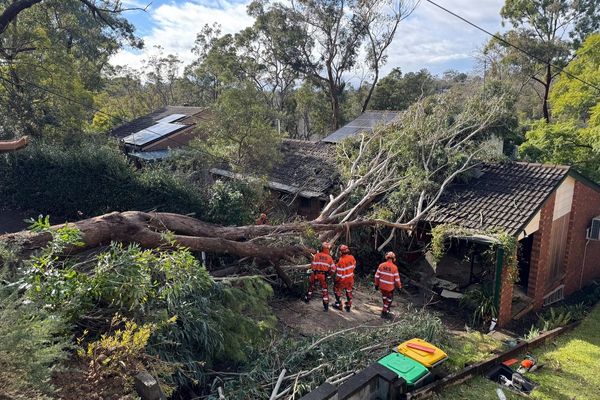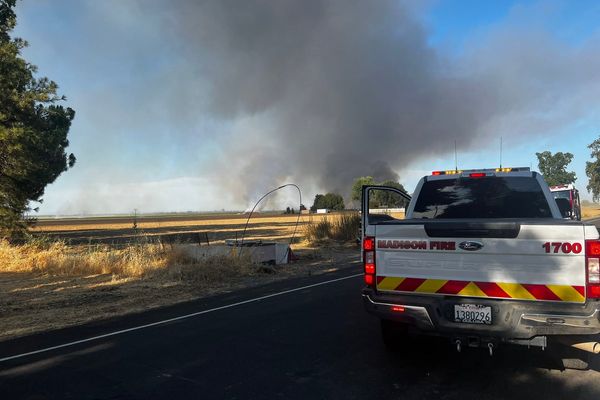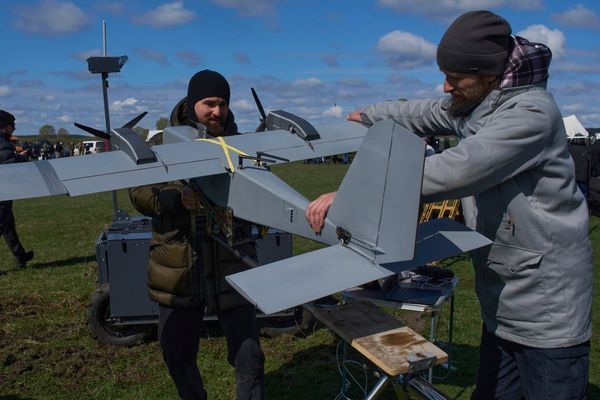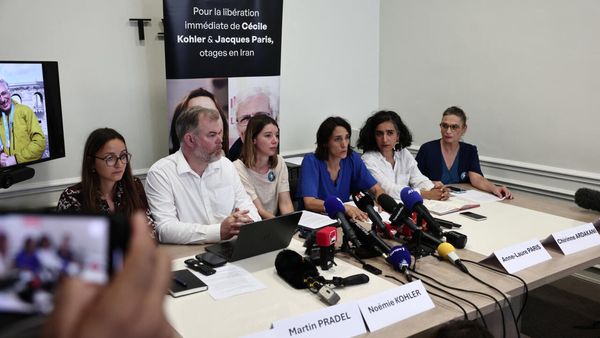
People held in Australia’s immigration detention centres say violence inside has become so normalised that it’s only a matter of time before someone is killed.
Severe overcrowding, the easy availability of drugs and an influx of “501s” – non-citizens who have had their visas cancelled for a criminal conviction – have made conditions inside centres such as Sydney’s Villawood intolerable, detainees say.
Guardian Australia spoke to numerous detainees – both 501s and asylum seekers – who said bashings, drug use and physical threats had become routine.
Sarah Atangana was deported to the US this week after being detained in Villawood after being sentenced to an intensive correction order. She said she had been attacked twice in three months inside.
Atangana said drugs were contributing to the frequency and severity of the violence, with the centre “awash” with ice, heroin and cocaine.
“Men pay women to fight for their entertainment and the girls use the money to buy drugs,” Atangana said.
“The day before I complained about a girl threatening to kill another detainee with a knife, she was paid $60 – a point of ice – to shake up another girl.”
Atangana said a detainee set upon her in the laundry in July, scratching her face until it drew blood because they “heard spirits” in the washing machine.
Several detainees have told Guardian Australia that a woman was held down and physically and sexually assaulted by a group of detainees in July after they entered her room early in the morning.
“It needs to be exposed,” the alleged victim said, sending photos of her injuries. “Otherwise, I’m going to die from these everyday dramas.”
Others said they had been left with permanent scars after being assaulted in Villawood.
Guardian Australia has seen photos of a man who suffered severe burns to 12% of his body after a detainee poured a vacuum flask of coffee over him earlier this year. The matter was referred to the Australian federal police but no further action was taken.

Ian Rintoul from the Refugee Action Coalition said he feared some centres – such as Villawood and Christmas Island – were rapidly running out of space to put detainees.
“Villawood is at capacity and … three or four months ago in [Melbourne immigration transit accommodation], people were sleeping on the veranda and in laundries because there wasn’t room in some of the compounds.
“There’s no doubt that the overcrowding adds to the tension, with people living in each other’s pockets.”
Even in less crowded centres, such as Western Australia’s Yongah Hill, detainees echo concerns about their safety.
Yongah Hill is regarded by sources with knowledge of the detention regime as one of the most dangerous and consistently violent.
A Turkish national, 32-year-old Gokhan Can, was stabbed to death as he slept in his room at Yongah Hill in June. A riot broke out in the centre days later.
A refugee held at the centre said it was overcrowded, unsafe and filled with people who had been detained indefinitely for years.
“Most people in Yongah Hill are here for nothing, little things. We just never know when we are going to be released. Some people have lost it; they don’t shower, they don’t brush their teeth, they talk to themselves – and it changes people.”
The average period people spend in immigration detention is now at a record 700 days, according to the government’s latest statistics, up from 100 days in 2014 – 129 people, 8.5% of the total, have been detained for more than five years.
The average period of detention in Canada is 24 days. In the UK it is 29 and in the US 43.
About 1,500 people are currently in immigration detention centres across Australia. The cohort is dominated by the so-called 501s (892 people), with 251 asylum seekers and 369 overstayers or people whose visas had been cancelled for other reasons.
There were four deaths inside Australia’s immigration detention system in 2020-21, according to the most recent annual report from the Department of Home Affairs. The department also registered four escapes, 22 major disturbances, 34 sexual assaults and 195 acts of self-harm.
Immigration detention has a “prison-like culture”, the report says.
“As at 30 June 2021, of the 1,492 people in [immigration detention facilities], 1,250 (83.8 per cent) have a criminal history,” the report said. “This cohort has resulted in the creation of a criminal and prison-like culture characterised by increased attempts to smuggle contraband into facilities (including illicit drugs) via varying methods, standover tactics and associated assaults.”
Mandatory detention for “unlawful non-citizens” – ostensibly people who arrived in Australia by boat seeking asylum – was legislated in 1992, but with a time limit of 273 days. In 1994, the time limit was removed.
The Al Kateb judgment by the high court in 2004 found that indefinite detention without trial or charge was lawful.
In parliament last month, the independent member for Clark, Andrew Wilkie, reintroduced a bill that would outlaw indefinite detention, telling the House of Representatives that Australia’s detention regime was “immoral and unlawful”.
“We face the bizarre and outrageous situation in this country where someone, in some circumstances, can be detained indefinitely, without charge and without having been found guilty of anything. In particular, if someone is a citizen of another country but can’t be returned to that other country, they can effectively be kept in prison in Australia until the day they die.”
The bill was seconded by the independent Kylea Tink, who argued Australia’s immigration regime was “uniquely cruel”, and supported by her fellow independents Zoe Daniel, Zali Steggall, Monique Ryan, Allegra Spender and Sophie Scamps.
An ABF spokesperson acknowledged there had been recent cases of assaults by detainees against other detainees and staff at immigration detention facilities.
They declined to comment on specific incidents at Villawood and Yongah Hill but said the detention population had a “high proportion of people with criminal backgrounds” who have “higher security and health risks”.
“All such incidents are appropriately reviewed and referred to the relevant police jurisdiction where there is any allegation of criminality,” they said.
“For any detainee or staff member impacted by incidents, including assaults, support services are made available through specialist providers.”







